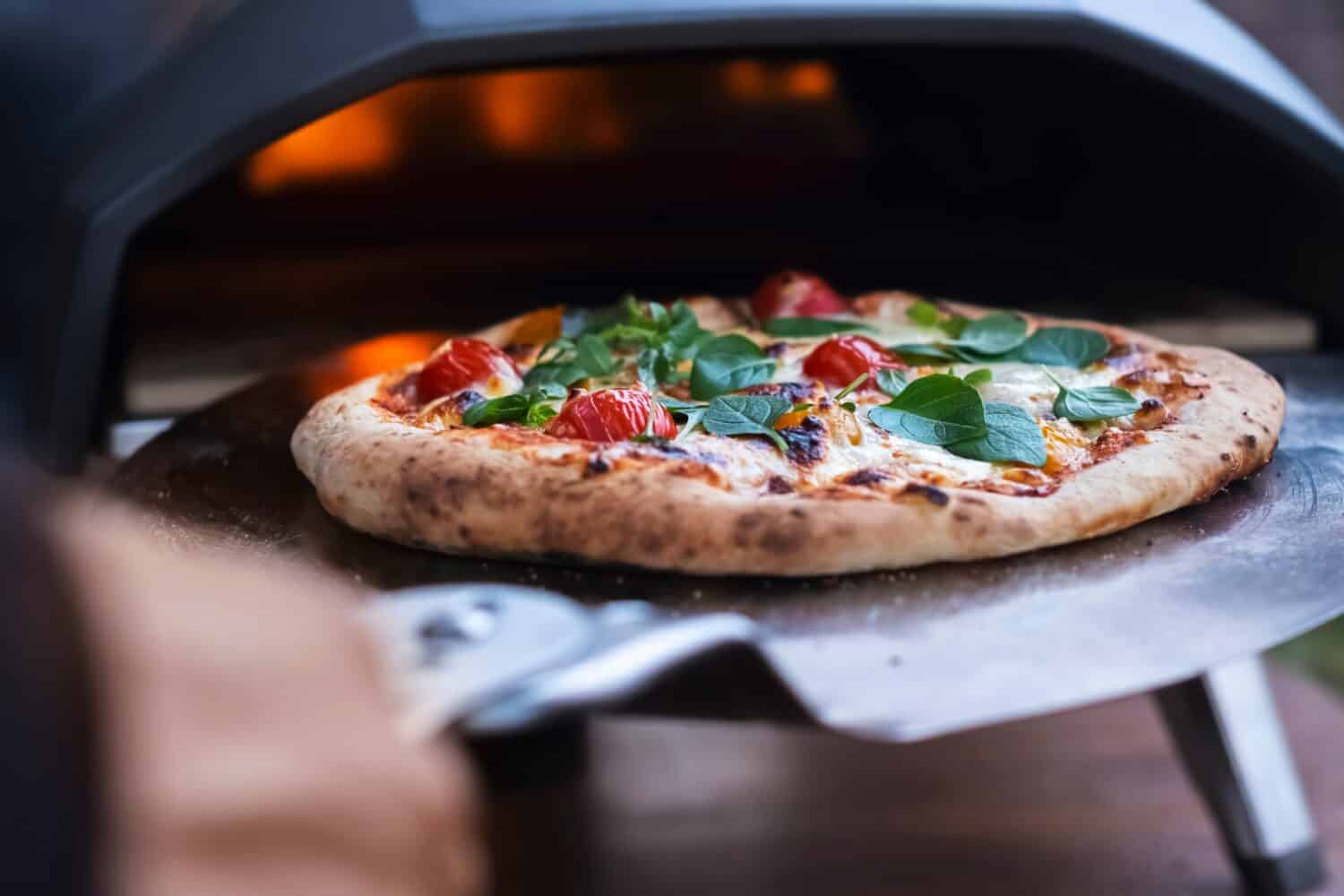Say you're craving a slice of pizza, and can't decide what type to get. When it comes down to Italian vs. American pizza, there are quite a few things to consider. Firstly, let it be known there are a lot of types of American pizza, all of which vary immensely in crust thickness, toppings, and sauces. Italian pizza and American pizza differ in crust texture and thickness, sauce consistency, and traditional toppings. These differences, in turn, affect the nutritional profile of each kind of pizza. More on that a bit later.
Read on as we get into the deep-dish details of these differences! You'll learn some about the history and evolution of Italian vs. American pizza throughout the years. We'll also talk about how to make your own version and discuss some great recipe ideas to boot. Get a thorough rundown of the nutritional differences that may influence your choice between Italian pizza vs. American pizza. From now on, you'll be able to spot traditional Italian pizza vs. American pizza, whether you're out at a restaurant, or having food at a friend's. After this, you'll also be able to make both styles on your own! Let's get on with it!
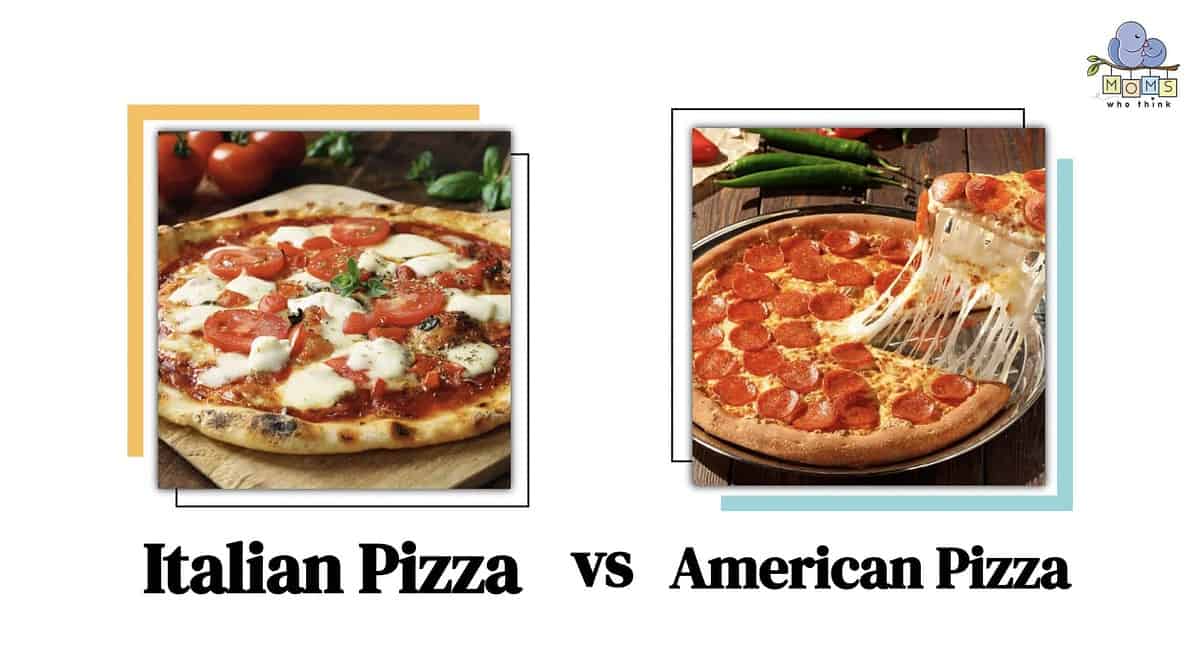
Italian Pizza vs. American Pizza: What Is The Difference?
Italian pizza and American pizza can be compared in a number of ways. The two differ in crust thickness, sauce, and toppings, as well as the resulting nutritional profile. Italian pizza tends to be more traditional and the crust resembles a flatbread, which is in line with the history of the evolution of the pizza. American pizza is an umbrella term, under which fall a few types of Americanized Italian pizza. We'll do a crash course on New York style, Chicago deep-dish, Detroit pan pizza, and California wood-fired, among others. Stick around as we delve into the many tasty options between Italian and American pizza styles.
What is Italian Pizza?
Italian pizza, as its name may suggest, hails from Italy. It features a thin, nearly flatbread-type crust, and traditional toppings like fresh tomato sauce with olive oil, creamy mozzarella, and a few springs of basil. It is far less packed with cheese and other toppings than more Americanized pizza, and its historical evolution may very well play a part in its wonderful simplicity. Let's take a closer look at where Italian pizza started, and where it is today!
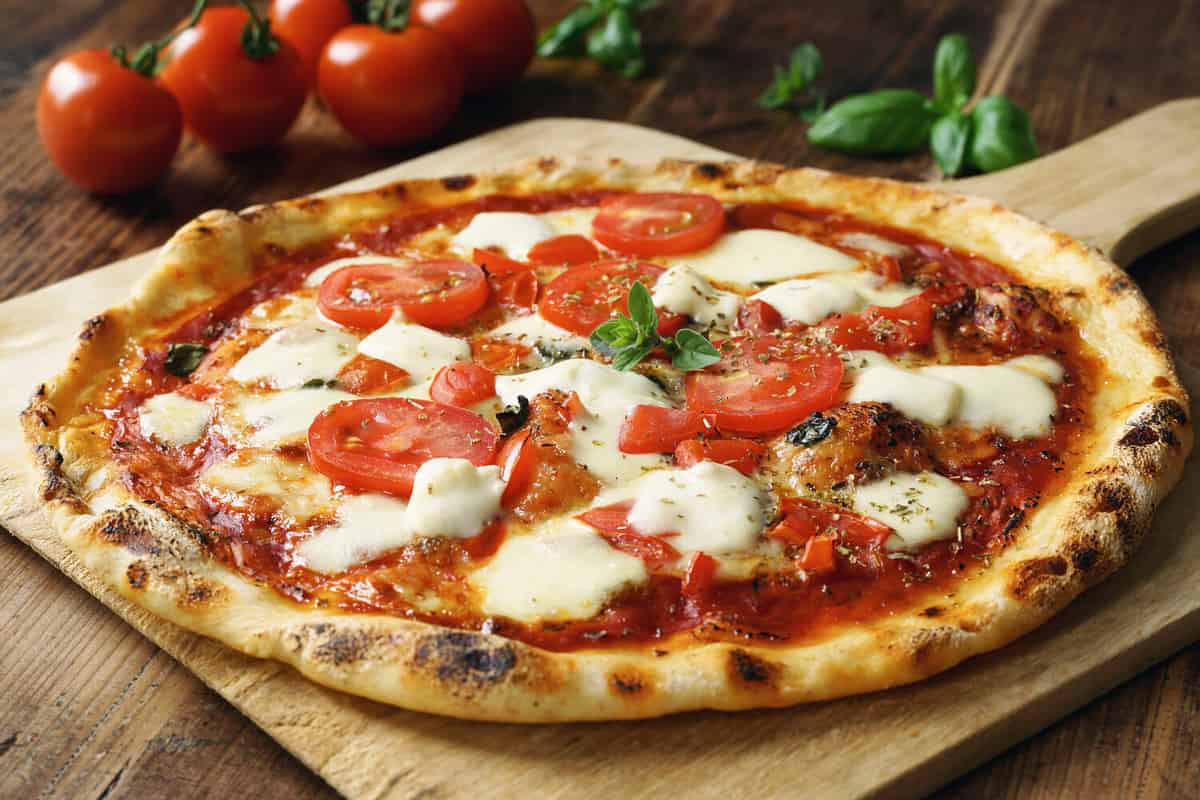
©V. Matthiesen/Shutterstock.com
History And Origin of Italian Pizza
Pizza, or at least a version of it, has been around dating back to ancient civilizations! According to the History Channel, the Egyptians, the Romans, and the Greeks, all had a version of baked flatbread with some toppings. Pizza, as we know it is still credited to Naples, in the Campania region of the Southwest. around 600 B.C., flatbread with toppings became a popular meal sold by street vendors and popular with the working class. On these original pizzas, you'd find familiar toppings the likes of fresh tomatoes, olive oil, onions, garlic, and even anchovies!
Pizza eventually moved from street stalls into restaurants, and apparently, the famous Margherita pizza was named for Queen Margherita of Italy. She and King Umberto I visited Naples around the 1860s and requested pizza with mozzarella cheese, basil, and red sauce. As popular as it was throughout Naples, it would take until about the 1940s for pizza to spread beyond Italy, and into America.
As immigration became more possible through globalization, travelers brought their recipes with them, and lo and behold on those brand new shores, they introduced the pizza to areas including New York, Chicago, and the South. While it was originally just intended to feed the immigrant population, soon other people became interested in the way to make this kind of pie. One of the first American-side Italian pizzerias opened on Spring Street in Manhattan in 1905. It was called G. Lombardi's, and it likely started the trend from Italian pizza to Americanized Italian food.
How To Make Classic Italian Pizza?
Following this New York Times Cooking recipe for classic Italian pizza, you'll need a thinly stretched pizza crust, tomato sauce, olive oil, fresh mozzarella, and basil leaves. Fun fact about this pizza, the colors mimic the Italian flag! If you choose, you can make the crust from scratch, or substitute certain ingredients for items of your preference. Read more about ingredient substitution, here.
First, you'll want to place your dough on a pizza stone, or tray and put it in the middle rack of the oven with the heat all the way up. This recipe recommends heating the dough for at least an hour while you prepare the rest of your ingredients. Traditional Italian pizza sauce is slightly different than red sauce from the store. If you're feeling up for it, use canned tomatoes, olive oil, and salt, and blend them in a food processor to produce some really fresh tomato sauce topping.
Take your pizza out of the oven and spread the sauce evenly, with 1/2 inch of space from the edge. Drizzle some olive oil and break up your mozzarella cheese over the face of the pizza. Lastly, add your basil leaves, and bake for between 4-8 minutes on high. Check that your cheese is bubbling and remove it from the oven to cool. Now, enjoy your traditional homemade Italian pizza!
Recipe Ideas
For some other classic Italian pizza recipes, check out these ideas below. You'll notice that some of the toppings are regionally influenced by where these pizzas were invented in Italy!
What is American Pizza?
Moving on to American pizza, which covers a wide range of unique toppings and pizza crust sizes! For brevity, we'll focus predominantly on a few kinds of American pizza that were inspired by the Italian version but are not commonplace in American-Italian cuisine. You may have heard of New York-style, Chicago deep-dish, Detroit pan pizza and California wood-fired, which are all versions of American pizza. The crusts vary in thickness, with the Chicago deep dish and Detroit pan styles coming in with the largest crusts. New York-style pizza is actually known for its thin crust, but unlike Italian pizza, it goes quite heavy on cheese, red sauce, and more processed meat toppings. And Californian wood-fired, which mimics the technique of Italian pizza, also uses creative toppings, cheese, and other delicacies.
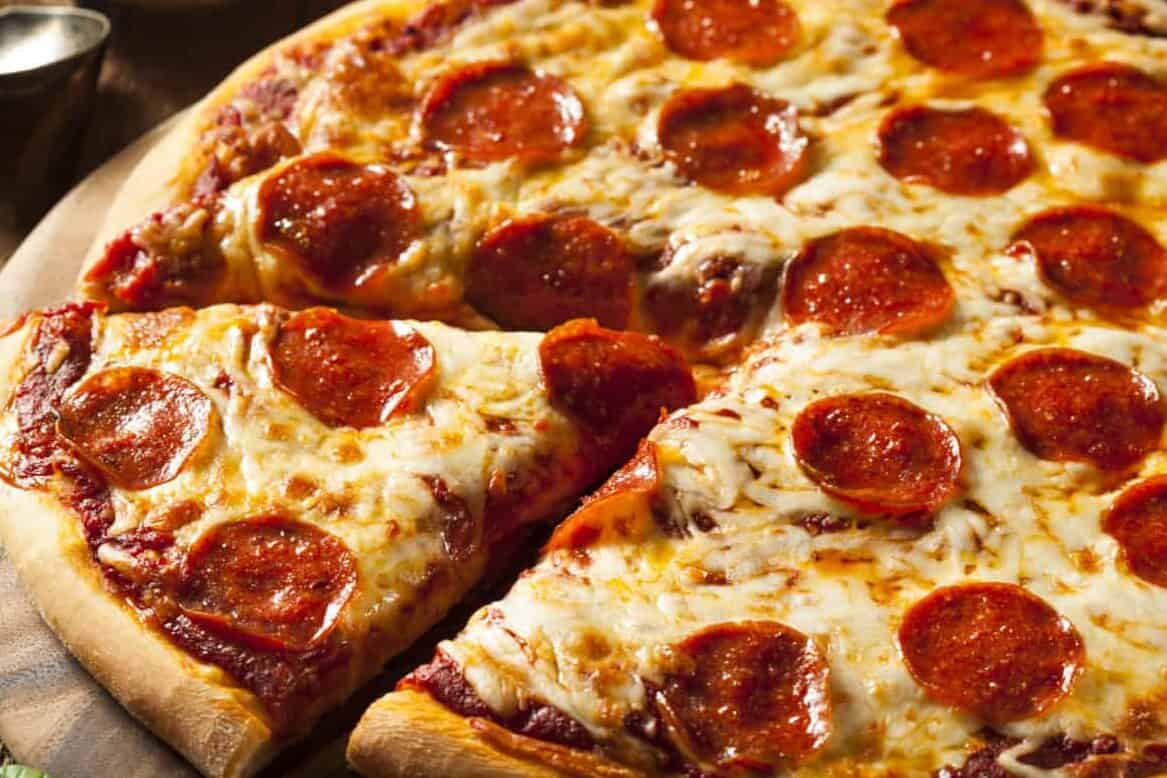
©Brent Hofacker/Shutterstock.com
History And Origin of American Pizza
We mentioned one of the first pizza restaurants in America above, but how we got from Italian pizza to huge slices of Buffalo chicken, with ranch dressing pizza is a bit of a longer story. The Smithsonian writes that even before G. Lombardi's was serving pizza, another eatery called John's on Bleecker Street was serving traditional Italian pie as early as 1898. While the exact origin of pizza on American soil seems to be unclear, what is clear is that people began to develop a taste for it, and as all things go the American way, they started making it bigger, with more flavors, and sauces to enjoy.
GIs stationed overseas returned with a hankering for pizza, and its popularity boomed with pizza chains starting throughout the 1950s. Regional pies began to pop up with the deep dish variety in Chicago, and flat, cheap slices in New York. Nowadays, pizza can very much reflect its community, with high-end editions in wealthier areas including fancy toppings, while a block away you can still get a $5 slice with extra toppings on the cheap. American pizza evolved with American taste buds, and here we are now.
Recipe Ideas
While there are many ways to make an “American pizza,” here are a few wild, and more classic ideas to get your creative juices flowing. Luckily, it's easy to make, and not hard to enjoy. So have fun with it!
Nutritional Value of Italian Pizza vs. American Pizza
As you can see from this handy chart below, a slice of Italian pizza compared to a slice of American pizza differs slightly in terms of nutritional profile, Across the board, American pizza clocks higher in terms of calorie count, carbohydrates, fat, saturated, fat, and cholesterol. This has a lot to do with the topping choices and processed ingredients that are commonly found in American-style pizza. There are ways to make a healthy version of these Americanized pizza pies. Try using cauliflower flour for the crust, or healthier toppings like veggies, or low-fat cheese. It's all about the portions when it comes to pizza.
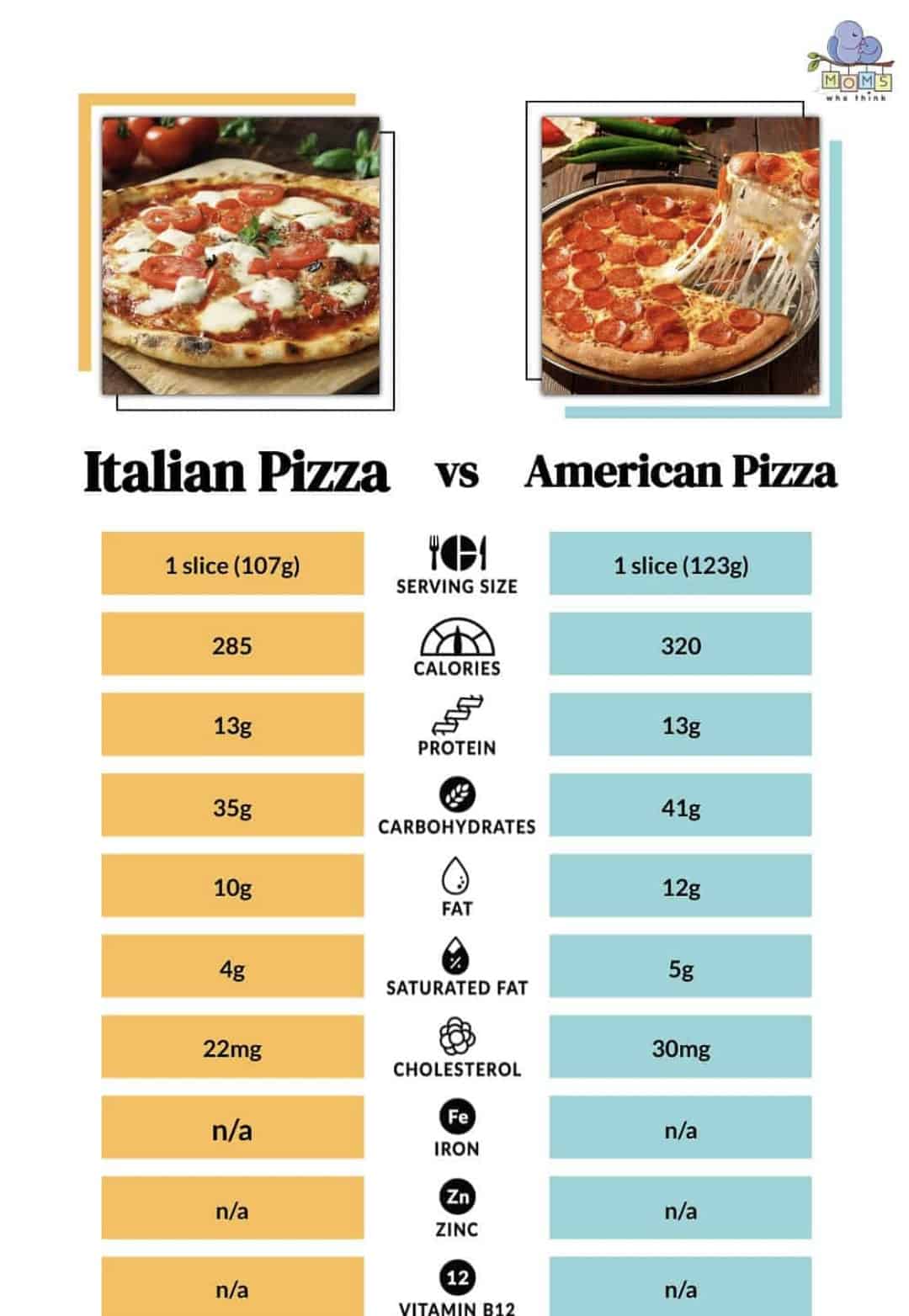
Italian Pizza vs. American Pizza: Are They The Same Thing?
The image featured at the top of this post is ©Mr. and mrs. Black/Shutterstock.com.
